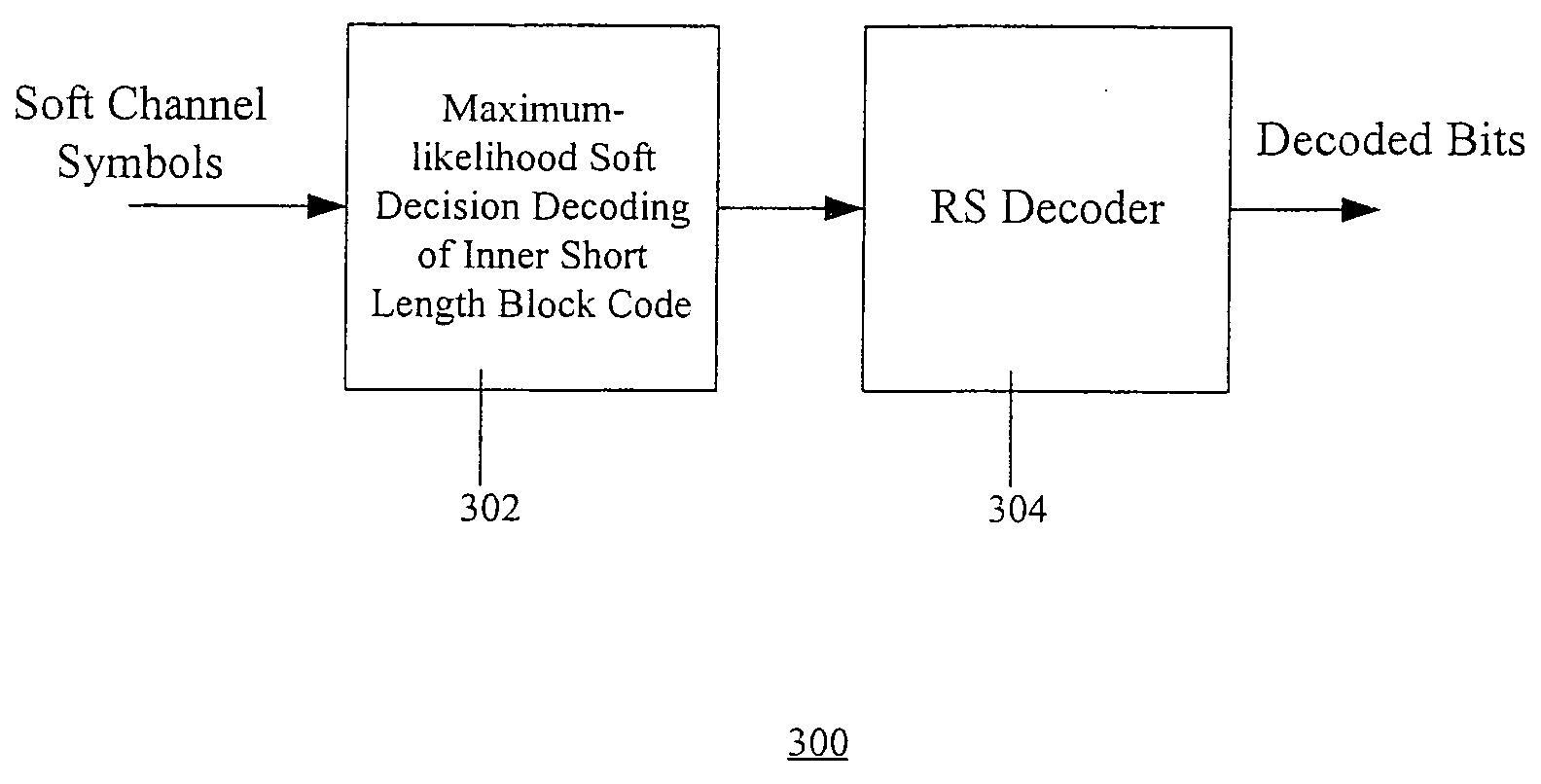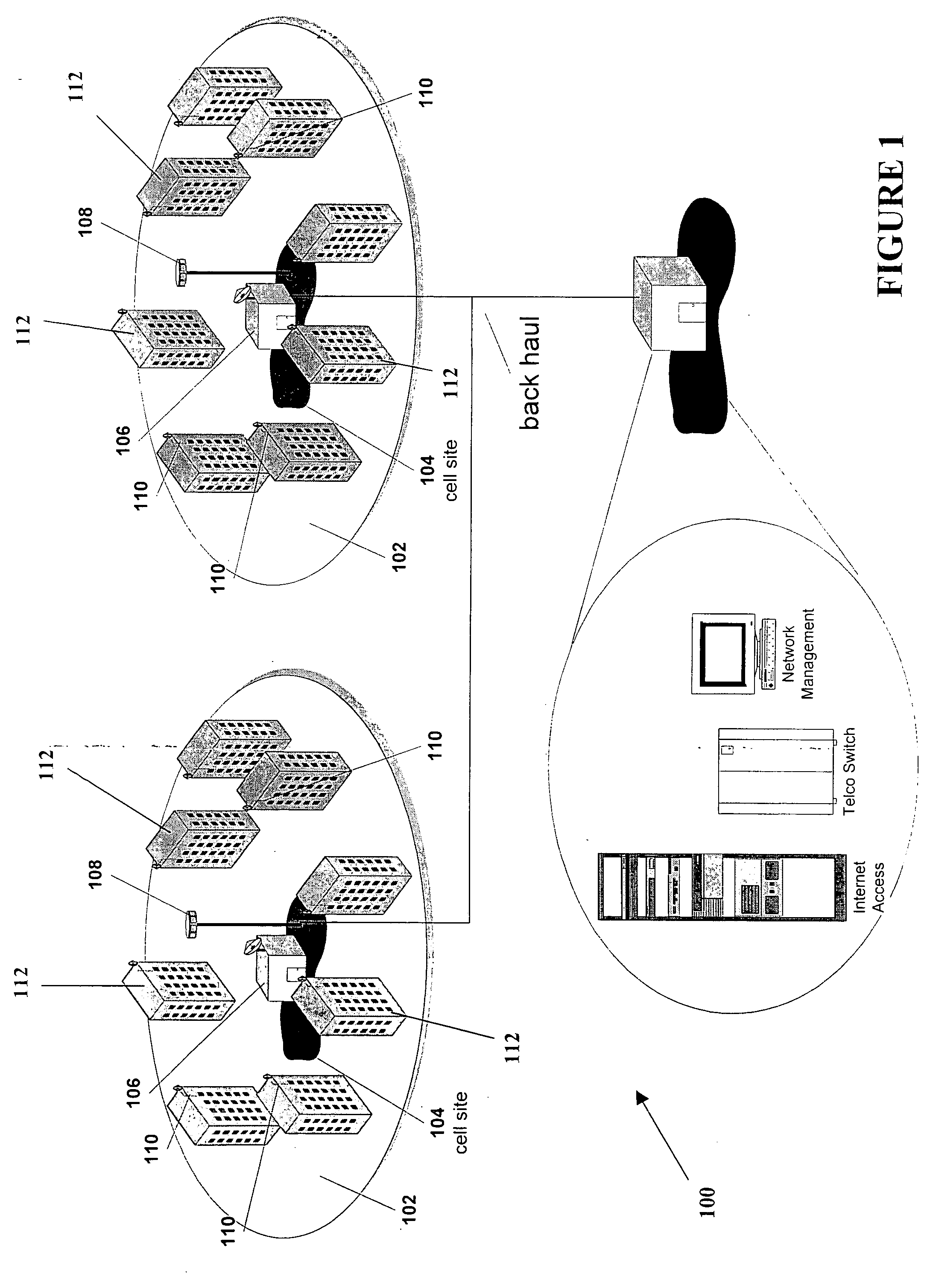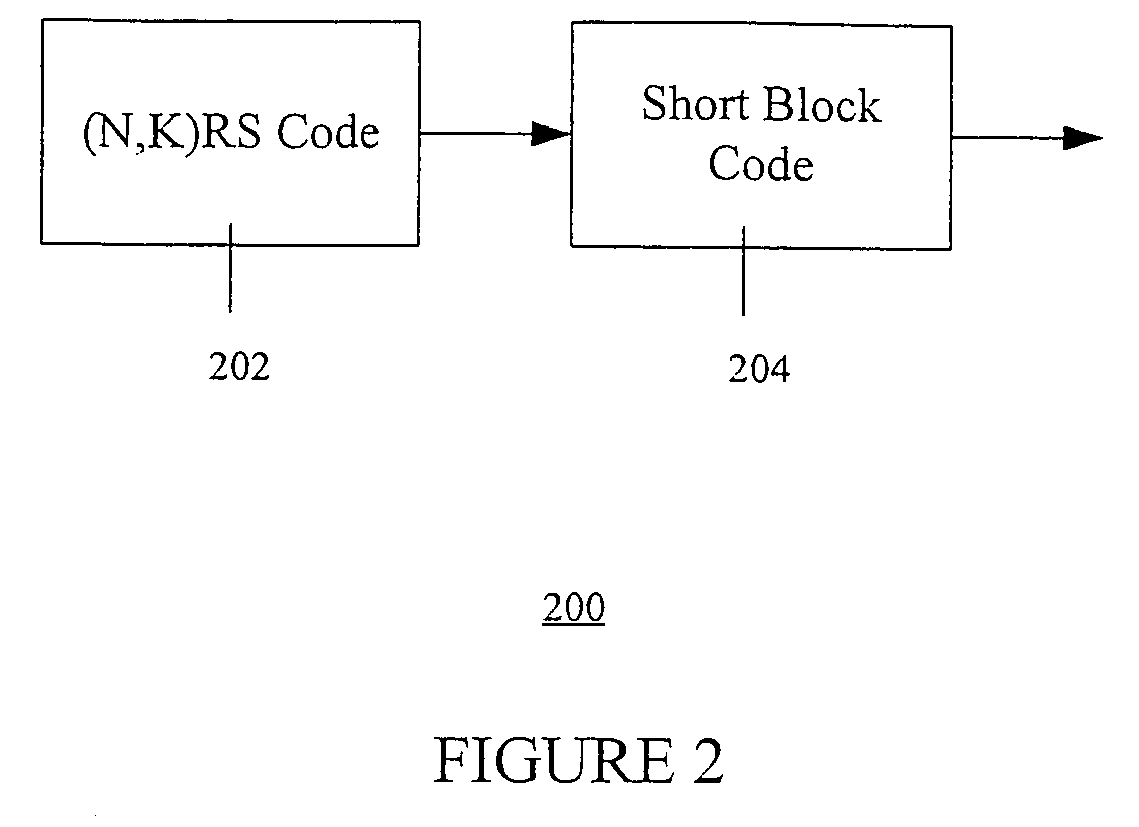Method and apparatus for concatenated channel coding with variable code rate and coding gain in a data transmission system
a data communication system and variable code rate technology, applied in the field of coding methods and apparatuses, can solve the problems of more complex code implementation and more complex code, and achieve the effects of reducing complexity, cost, size and power consumption, and efficient coding data
- Summary
- Abstract
- Description
- Claims
- Application Information
AI Technical Summary
Benefits of technology
Problems solved by technology
Method used
Image
Examples
first exemplary embodiment
A First Exemplary Embodiment
Inner Code K=3, Rate ½ Convolutional Code
[0057] A first exemplary embodiment comprises an inner code having a short length block code derived from an unpunctured rate l / 2 constraint length 3 convolutional code. For each inner code message block, trellis tailbiting requires that the encoder memory be initialized with the last two bits of the block. In the first exemplary embodiment the message length for the inner code is preferably equal to or greater than 8 bits. For outer RS codes based on GF(2n), the inner code message length in bits is preferably a multiple of n. Thus, for an outer RS code based on GF(28), the inner code message length (in bits) is preferably a multiple of 8. Similarly, for an outer RS code based on GF(29) or GF(210) the inner code message length (in bits) is preferably a multiple of 9 or 10, respectively. These configurations are exemplary only as those skilled in the coding art shall recognize that other configurations can be used ...
second exemplary embodiment
A Second Exemplary Embodiment
Inner Code K=3, Rate ⅔ Convolutional Code
[0058] A second exemplary embodiment comprises an inner code having a short length block code derived from a punctured rate ⅔ constraint length 3 convolutional code. For each inner code message block, trellis tailbiting requires that the encoder memory be initialized with the last two bits of the block. The punctured pattern is preferably 11 and 10 corresponding to generator polynomials 7 and 5, respectively. This punctured pattern is exemplary only as one skilled in the art shall recognize that other punctured patterns can be used with the present invention without departing from the spirit of the invention. The inner code length of the second exemplary embodiment is preferably equal to or greater than 8 bits and a multiple of the puncture period (i.e., 2). As described above with reference to the first exemplary embodiment, for outer RS codes based on GF(28), the inner code message length (in bits) is preferabl...
third exemplary embodiment
A Third Exemplary Embodiment
Inner Code K=3, Rate ⅘ Convolutional Code
[0059] A third exemplary embodiment of the present invention comprises an inner code having a short length block code derived from a punctured rate ⅘ constraint length 3 convolutional code. For each inner code message block, trellis tailbiting requires that the encoder memory be initialized with the last two bits of the block. The punctured pattern is preferably 1001 and 1110, corresponding to generator polynomials 7 and 5, respectively. This punctured pattern is exemplary only as one skilled in the art shall recognize that other punctured patterns can be used with the present invention without departing from the spirit of the invention. The inner code length of the third exemplary embodiment is preferably equal to or greater than 16 bits and a multiple of the puncture period (i.e., 4). As described above with reference to the first and second exemplary embodiments, for outer RS codes based on GF(28) the inner cod...
PUM
 Login to View More
Login to View More Abstract
Description
Claims
Application Information
 Login to View More
Login to View More - R&D
- Intellectual Property
- Life Sciences
- Materials
- Tech Scout
- Unparalleled Data Quality
- Higher Quality Content
- 60% Fewer Hallucinations
Browse by: Latest US Patents, China's latest patents, Technical Efficacy Thesaurus, Application Domain, Technology Topic, Popular Technical Reports.
© 2025 PatSnap. All rights reserved.Legal|Privacy policy|Modern Slavery Act Transparency Statement|Sitemap|About US| Contact US: help@patsnap.com



